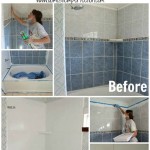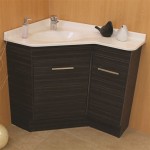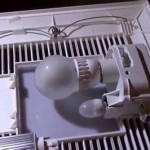Double Bathroom Sink Clogged Drain
A clogged drain in a double bathroom sink can be a frustrating plumbing issue. Understanding the unique challenges presented by this type of fixture and knowing the proper troubleshooting and resolution methods can save time and potentially avoid costly professional plumbing services.
Common Causes of Double Sink Clogs
Several factors contribute to clogs in double bathroom sinks. The shared drain pipe, known as the P-trap, often becomes a collection point for debris from both sinks. Other common causes include:
* Hair accumulation * Soap scum buildup * Toothpaste residue * Small objects accidentally dropped down the drain * Mineral buildup from hard water * Combination of the above factorsInitial Troubleshooting Steps
Before resorting to more involved methods, simple troubleshooting steps can often resolve the issue. These initial steps can help dislodge minor clogs and identify the source of the problem.
* Check both sink strainers for debris and remove any visible obstructions. * Run hot water down both drains for several minutes. The hot water can melt soap scum and grease buildup. * Plunge both sinks simultaneously. Using a cup plunger, ensure a tight seal over each drain opening and plunge vigorously for 30-60 seconds.Using a Chemical Drain Cleaner
If the clog persists, a chemical drain cleaner can be a next step. However, caution is advised as these products contain harsh chemicals that can damage pipes if used improperly. Always follow the manufacturer’s instructions carefully.
* Select a drain cleaner appropriate for the type of pipes in the home. * Wear protective gloves and eye protection. * Ensure adequate ventilation in the bathroom. * Pour the recommended amount of cleaner down the drain. * Allow the cleaner to sit for the specified time. * Flush the drain with hot water.Snaking the Drain
A plumbing snake, also known as an auger, can effectively reach further down the drain system to break up or retrieve stubborn clogs. Different types of snakes are available, including manual drum snakes and motorized versions.
* Insert the snake into the drain opening. * Rotate the snake as it is advanced down the drain pipe. * Feel for resistance, which indicates the clog. * Continue rotating the snake to break up or retrieve the clog. * Once the clog is cleared, retract the snake and flush the drain with hot water.Inspecting and Cleaning the P-Trap
The P-trap is a U-shaped pipe located under the sink designed to trap debris and prevent sewer gases from entering the home. If the clog is located in the P-trap, it can be easily accessed and cleaned.
* Place a bucket under the P-trap to catch any water. * Loosen the slip nuts connecting the P-trap to the drain pipes. * Remove the P-trap and clean out any debris. * Reassemble the P-trap, ensuring the slip nuts are tightened securely. * Run water down both drains to check for leaks and proper drainage.Addressing Clogs Between the Sink and the P-Trap
Sometimes, clogs occur in the drain pipes between the sink and the P-trap. This area can be accessed by removing the connecting pipes.
* Place a bucket under the pipes to catch any water. * Loosen the slip nuts connecting the pipes to the sink drain and the P-trap. * Remove the pipes and clean out any debris. * Reassemble the pipes, ensuring the slip nuts are tightened securely. * Run water down both drains to check for leaks and proper drainage.Preventing Future Clogs
Implementing preventative measures can significantly reduce the occurrence of future clogs. Regular maintenance helps to keep the drain lines clear and flowing smoothly.
* Install strainers in both sink drains to catch hair and other debris. * Flush the drains with hot water after each use. * Periodically pour baking soda followed by vinegar down the drains to help dissolve buildup. * Avoid pouring grease or oil down the drain. * Schedule regular plumbing inspections to identify and address potential issues early on.When to Call a Professional Plumber
While many clogs can be resolved using DIY methods, certain situations warrant calling a professional plumber.
* Persistent clogs that cannot be cleared using the methods described above. * Slow drainage in both sinks despite clear drain lines. * Recurring clogs. * Suspicion of a more serious plumbing issue, such as a damaged pipe. * Lack of comfort or experience with plumbing tasks. A professional plumber has the expertise and tools to diagnose and resolve complex plumbing problems effectively.
4 Easy Ways To Unclog A Double Sink Wikihow

4 Easy Ways To Unclog A Double Sink Wikihow

How To Clear Clogged Drains Diy

How To Clear A Clogged Drain Reviews By Wirecutter

How To Unclog A Slow Running Bathroom Sink Drain 10 Options

How To Unclog A Slow Running Bathroom Sink Drain 10 Options

How To Unclog A Sink Drain Without Using Chemicals Kitchen Clogged Double
Why Does A Bathroom Sink Drain Slowly Quora

Best Drano Alternatives Goodbee Plumbing
Why Does A Bathroom Sink Drain Slowly Quora
Related Posts







